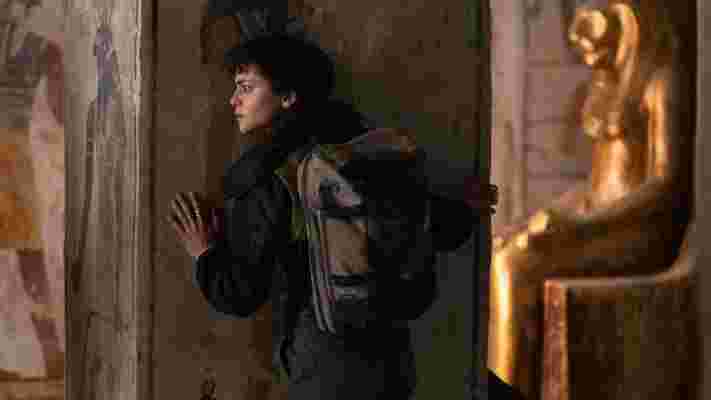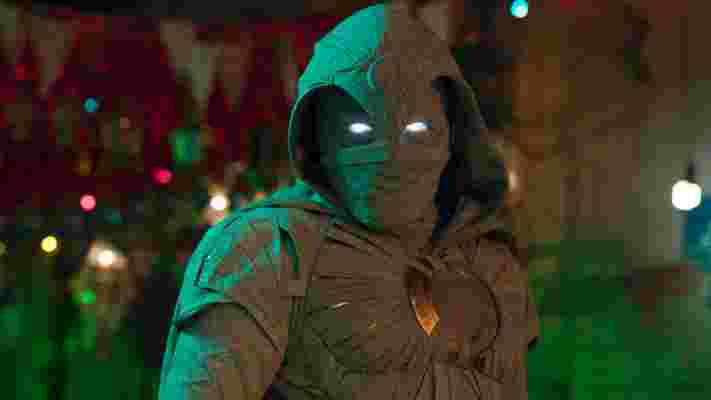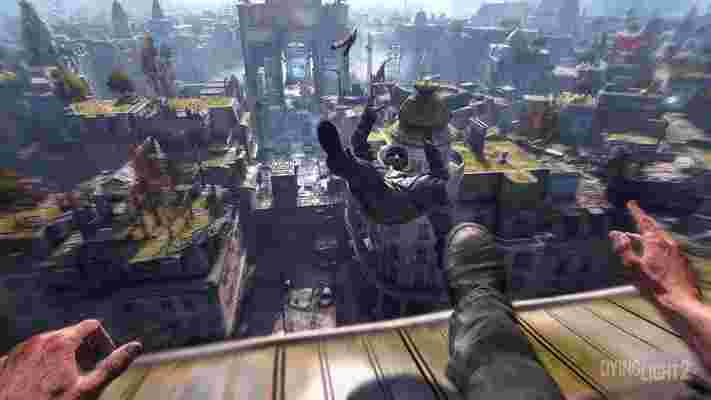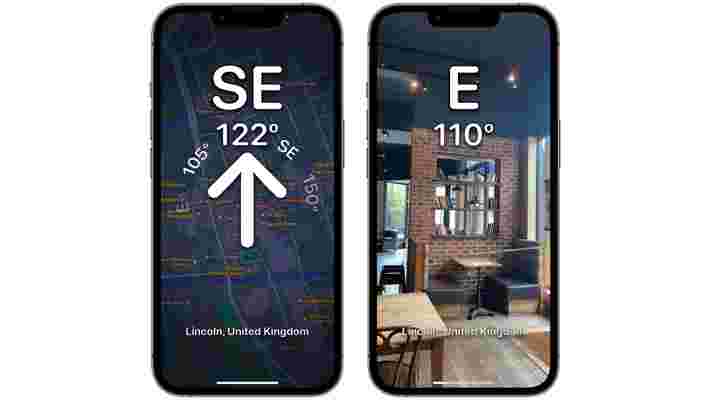Major spoilers follow for Moon Knight episode 6.
Moon Knight episode 6 has brought the curtain down on the caped vigilante's journey in the Marvel Cinematic Universe (MCU) – or has it? The Disney Plus show's final entry rounded out the story it set out to tell. But, based on the Marvel Phase 4 project's season finale, there may be more to come from Marc Spector/Steven Grant's MCU arc.
If you've been left perplexed by what just went down in the show's final entry, we've got you covered. Below, we'll break down the biggest surprises in the Disney Plus series ' finale, including how Layla obtained her powers, what the show's post-credits scene means, and whether a second season is on the way. There's a lot to get through, so put on your Moon Knight/Mr. Knight costume and prepare to dive in.
It goes without saying, but we're diving into huge spoiler territory for Moon Knight episode 6 from now on . Turn back now if you haven't seen the sixth episode, but make sure you bookmark this page and return once you have done so.
Moon Knight episode 6: Layla's Scarlet Scarab explained

Not long into Moon Knight episode 6, we follow Layla El-Faouly as she looks to exact revenge on Arthur Harrow for killing Marc/Steven. Concealing her identity and brandishing a knife, she attempts to sneak up on him and kill Harrow before he can unleash Ammit on the world.
Layla, though, is stopped by Taweret – the hippo goddess we saw in episodes 4 and 5 – when the latter possesses one of Harrow's deceased victims. Taweret tries to convince Layla to become her avatar so she can bestow superpowers on Layla to help her fight Harrow.
Layla refuses – well, initially anyway. Later on in the Great Pyramid of Giza, Layla agrees to let Taweret possess her (and become Taweret's avatar in the process) to help Khonshu and Marc/Steven stop Harrow. Harrow tries to bury Layla under a large pile of rubble but, imbued with Taweret's powers, she breaks free of her tomb – and emerges with abilities and a stellar-looking costume: Layla has become the Scarlet Scarab. And we know this is her superhero pseudonym, with an article on Marvelom confirming as much.
"Wait, who is the Scarlet Scarab?" we hear you say. In the comics, the Scarlet Scarab is the Protector of Egypt and someone whose powers manifest from the Ruby Scarab, an ancient artefact that gifts its wielder god-like powers. The Scarlet Scarab's abilities include superhuman strength, the ability to fly at around 400 miles per hour (mph), and to fire concussive blasts of mystical energy.
The MCU's version's of the Scarlet Scarab differs slightly from its comic book counterpart. In Moon Knight, Layla possesses superhuman strength and durability, but she also wields twin swords and can use her costume's in-built metallic wings to attack her foes and deflect enemy fire. She doesn't require the Ruby Scarab to obtain these powers either as Taweret gifts them to Layla in the show. Taweret doesn't have a major role to play in the comics, so Marvel Studios has clearly repurposed the Ruby Scarab and Taweret to give the duo more prominent arcs in the live-action series.
Interestingly, the comic book version of Layla's father – who goes by the name Abdul Faoul – is the original Scarlet Scarab. The signs that Layla would eventually gain her own superpowers, then, were there all along. And, given that a girl (who Layla rescues in episode 6) asks Layla if she's an Egyptian superhero, it appears that the Protector of Egypt alias is alive and well in the MCU, too. Here's hoping we see her in action as Scarlet Scarab again.
Moon Knight episode 6 post-credits scene explained: Jake Lockley finally revealed

Layla's Scarlet Scarab isn't the only new character (or should that be alter-ego?) to emerge in Moon Knight episode 6. After teasing his arrival for much of the show , Marvel finally unveiled its live-action depiction of Jake Lockley, Marc and Steven's other persona.
The sixth episode's post-credits scene shows Arthur Harrow in a similar psychiatric hospital to the one that Marc/Steven were trapped in. This asylum, though, is actually real. We know this because we see a mysterious figure turn up and wheel Harrow (in his wheelchair) out of the hospital and into a limousine in the real world.
Here, Harrow meets a rather dapper looking Khonshu. Harrow mocks Khonshu for not killing him earlier, but Khonshu has the last laugh. "Marc Spector truly believed that after he and I parted ways, I wanted his wife to be my avatar," Khonshu says. "Why would I ever need anybody else, when he has no idea how troubled he truly is?"
The limousine's blacked out divider winds down as Khonshu finishes speaking, and who is it that we see? Jake Lockley, the third (and more brutal) alter to Marc and Steven. Jake, who is Hispanic (rather than a New Yorker as he is in the comics) in the show, tells Harrow: "Today is your turn to lose" and shoots him four times with a silenced pistol. Jake starts the limousine and drives away with Khonshu (and Harrow's dead body) inside.
Interestingly, the limousine's registration plate reads "SKPTR" – i a clear call back to Marc's surname. Meanwhile, the limousine is a nod to Steven's comic book version. In Marvel's source material, Steven is a millionaire who masquerades as Mr. Knight, with this superpowered alter-ego using a modified limousine to travel around in.
Like the alterations made for Layla/Scarlet Scarab, then, it seems Marvel Studios has remodeled Jake's backstory, personality and means of transportation for the MCU. It remains to be seen whether Jake will have a suit – that is, if Moon Knight returns for a second season on Disney Plus or in a Marvel movie .
There are a number of Moon Knight costumes in the comics, such as his West Coast Avengers or all-black Ultimate attire, which could be used to separate Jake from Moon Knight/Mr Knight. We'll have to wait and see on that front. And speaking of Moon Knight's future...
Moon Knight episode 6 ending explained: will there be a second season?

That's unclear right now. Unlike Loki's season 1 finale , which confirmed the trickster god was getting a second season of his Disney Plus series in a post-credits stinger, Moon Knight doesn't. Clearly, Marvel is keeping its options open on this front.
Moon Knight simultaneously tells a self-contained story and leaves enough room for Oscar Isaac to return to the MCU if he (and the show's creative team) feel that there's a fulfilling new story to tell. While some of his fellow MCU actors are tied down for multiple Marvel projects, Isaac isn't – he only signed a one-season deal (per Variety ) ahead of starring in the MCU TV series. So there's no guarantee that Isaac will reprise his role (or should that be roles?) down the line.
Marvel has seemingly implied that Moon Knight will return but, with episode 6 ending without a "Moon Knight will return" tagline, the character's fate in the MCU is up in the air for the time being.
We'd certainly like to see Moon Knight season 2. We really want to see how Marc, Steven, and Jake would co-operate/argue if they crossed paths and, as Moon Knight's TV show has shown, Marvel can tell standalone tales (with little to no interconnectivity) in the MCU. So Marvel wouldn't need to tie Moon Knight to any of its other projects if the studio wanted to bring Isaac and company back for another outing, which is something we'd like to see from future MCU projects . Fingers crossed, then, that we find out sometime soon.
Dying Light 2 is no longer hamstrung on Xbox Series S
Dying Light 2 ’s latest update has added a performance mode to the Xbox Series S version of the game, which doubles the game's frame rate.
At launch, developer Techland’s long-awaited zombie parkour sequel was locked to an arbitrary 30fps on Xbox Series S , whereas Xbox Series X owners had the choice between Quality mode ( 4K resolution at 30fps) or Performance mode (1080p resolution at 60fps).
The 30fps cap didn’t go down well with Xbox Series S owners, as Microsoft’s more affordable console is more than capable of outputting at 60fps in the majority of titles, as seen in other open world games like Assassin’s Creed Valhalla .
Fortunately, the Polish developer has been hard at work to address this disparity and the issue has now been corrected with the latest 1.0.2.0 patch on Xbox . There’s a long list of improvements but the headline one is that the Xbox Series S version now includes a Performance Mode that will run the game at 60fps, meaning those who own the cheaper Xbox can have a smooth post-apocalyptic parkouring experience.
The update doesn’t dismiss Xbox Series X owners either, though, as there’s now a new option called Balanced Mode, which is essentially an ideal compromise between Quality and Performance modes. You’ll still get 60fps but with 1440p resolution instead - in other words, you’re getting the best of both worlds on Series X.
The patch includes a whole host of fixes elsewhere as well, such as fixes to progression blocks in certain quests and issues with the co-op mode. Improvements have also been made to combat along with more natural ragdoll behaviors and audio cues and effects matching the surfaces bodies fall on. From bug fixes to improved UI/UX, the update should provide a much better overall experience for Dying Light 2 players. The full patch notes can be found here .
Not dead yet

The Dying Light 2's new update is obviously a big win is for Xbox Series S owners, who no longer have to feel like they’re playing a last-gen version of the game.
But while Techland has managed to resolve the game's frame rate issue, it does raise some questions over whether or not we'll get similar performance disparities between Xbox Series X and Xbox Series S titles in future releases, especially as developers begin focusing on next-gen exclusives, such as the upcoming Starfield .
The benefit of buying the less powerful but more affordable Xbox Series S has meant a more accessible route to experience next-gen gaming. Nonetheless, there are still drawbacks when compared to what’s possible on Xbox Series X, such as lower target frame rates and resolution. The Series S can also sometimes miss graphical features such as ray tracing .
Considering the many years of support and updates that made the original Dying Light such a success, it’s likely we’ll be seeing even more improvements and additions to Dying Light 2 in the near future. Having 60fps available on all current-gen platforms including Xbox Series S is nonetheless a great minimum to hit.
A new compass app offers a feature that can improve Maps in iOS 16
I get sent a lot of apps to try out, and whether they're on iOS , Android , Windows , or Linux, I try them all. Mainly because there's always a chance that an app will not only achieve what its developer has intended, but it also gives you an idea of how it could shape other aspects of your iPhone .
This is what happened with Compass GPS , released at the end of April by developer Rihab Mehboob. He got in touch back in January about a messaging app he created as well, that ingeniously works like a note-taking app .
This time, Mehboob told me that he wanted to make something different from other compass apps, which featured a great user interface, but could also easily direct a user in the right direction when walking somewhere.
I've been using it around Lincoln the past week, and not only does his aim succeed, but it gives me inspiration as to how Apple could improve its Maps app for iOS 16 , which may be announced at WWDC 2022 in June .
Maps in iOS 16 should be inspired by this app

Even before Maps was redesigned by Apple in iOS 6 , you could set a destination and then follow your route through a compass feature in the app. Since the launch of the Apple Watch in 2015 , you've been able to set your destination on your iPhone, then have your watch tap you on the wrist every time you need to turn left or right.
All of this has been useful, but even though Apple has said that it has a vested interest in augmented reality (AR), there's not been a feature in Maps to take advantage of the technology as yet.
When you want to find your position in Maps, you have to press the 'location' button on the top right twice for the app to adjust and rotate to give you an idea as to where you're facing. However, it can be difficult finding the right direction, and tapping a button twice feels unintuitive.
Mehboob's app solves this issue in an instant. Raise your iPhone and it switches to a mode with a compass overlaying the screen. Lower the iPhone, and it will show the map. It's a feature that's simple, but worked very well in practice as I was walking up the high street in Lincoln.

Whether Mehboob is moving on to the next idea as WWDC approaches, or there's bugs to fix in a future update of Compass GPS, there's potential here for a fully-fledged Maps app if Apple doesn't improve upon its own Maps app in iOS 16.
While it's free to download, Compass GPS has a $9.99 / £9.99 / AU$10.99 fee to keep using its features, which gives hope that the app could see more useful features in the coming months.
Regardless, Mehboob's app showcases what the potential of Apple's Maps app could be with AR, especially if the rumored AR Glasses come to fruition.